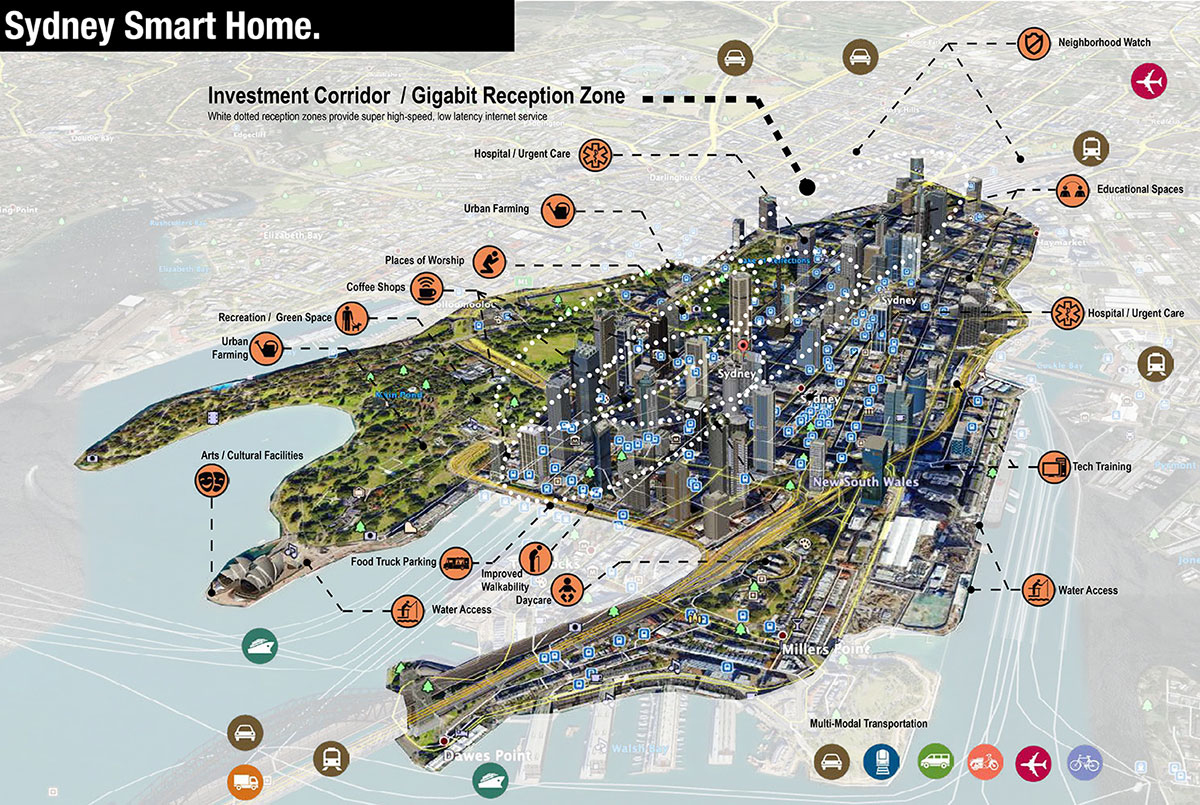Sydney shortlists KU professors’ affordable, smart housing plan

LAWRENCE – Affordable housing is the issue of the day in Kansas and around the world. So it is that two researchers in the University of Kansas School of Architecture & Design have received a $20,000 honorarium from the city of Sydney, Australia, to flesh out their shortlisted entry in that city’s Alternative Housing Ideas Challenge.
Joe Colistra, associate professor and director of the Institute for Smart Cities, and Nilou Vakil, program director of the school’s interior architecture and design program director, are spouses as well as partners in a firm they call in SITU Design. Among 230 international entrants, they were the only non-Australians selected for the final round of seven.
Their idea is a smart home that monitors its residents and collects data to offset costs.
A Sydney news release notes that the challenge invited alternative housing ideas “in the areas of delivery, financing, management, building, ownership and design with an aim to tackle the city's affordability crisis by increasing the affordable housing supply and reducing housing stress.”
“Like every major metropolitan area, they have an affordable housing crisis,” Colistra said. “One of the things that I found really attractive about this competition is that, in the second phase, they actually engage citizens to give you feedback, whereas most competitions … skip the citizens for whom you are ostensibly providing the solution.
“There are five workshops scheduled with city employees, planning professionals, residents of Sydney, builders and developers to work through some of these ideas. We're the only American team, so we're going to do it over Skype, and we'll probably travel there later in the year.”
Colistra said a smart city is an affordable city, with areas where people of different income levels live together, or in close proximity.
“We’ve been thinking about how to make cities more livable — in particular, how to make new neighborhoods in urban villages more livable,” he said. “One of our prime goals for the competition was to think about how you could create neighborhoods that allow you to thrive at all stages of life.
“The actual housing unit design stems from the mockup units we've been doing here at KU that deal with data collection. The idea is that the housing unit collects biometric data. We've listed sleep sensors, gait analysis, hydration readers, health markers — those types of data-collection systems — and that data gets tethered to a ground-floor clinic.”
That so-called Living Lab would be on the first floor of a multistory building, Colistra said.
“The ground floor can be rented at exponentially more than the market rate, to a research institution that needs the data to help the residents,” he said. “So that's how it pays for itself. By placing these multiuse, multifamily complexes in university and hospital districts, it actually subsidizes the cost of affordable housing above it.”
So wouldn’t there be resistance to living in such a Big Brother building? Colistra thinks perhaps not, given the benefits to residents.
“That implies a private company using your data, which I think has a bad connotation, at least in this country, for privacy,” he said. “We are thinking more that a health clinic or a hospital would use the data to help the residents — identifying when someone is limping or someone has fallen, or when they're exhibiting symptoms of Alzheimer's or Parkinson's. Even autism can be detected through sensors.
“And then in a broader scope, as you identify clusters of health problems … it can have broader city-planning implications.”
Colistra and Vakil have enlisted the help of their ArcD/Institute for Smart Cities colleagues, Assistant Professors Gregory Crichlow and Casey Franklin, for the next phase of the competition.
The second-stage meetings have already begun, and the process culminates with a public exhibition and comment session for the seven solutions in November-December.
The competition forms a sort of bridge between a larger, yearslong city-planning process called Sustainable Sydney 2030/Green/Global/Connected and Sydney’s Planning for 2050 efforts.
It’s an ideas competition, but Colistra hopes the project might be built someday.
“They've asked some pretty detailed questions,” he said. “I think there is an expectation from the public that some real implementation needs to come out of this.”
Illustration: Artist’s conception of a neighborhood where their Sydney Smart Home would go, submitted by Joe Colistra and Nilou Vakil with their contest entry